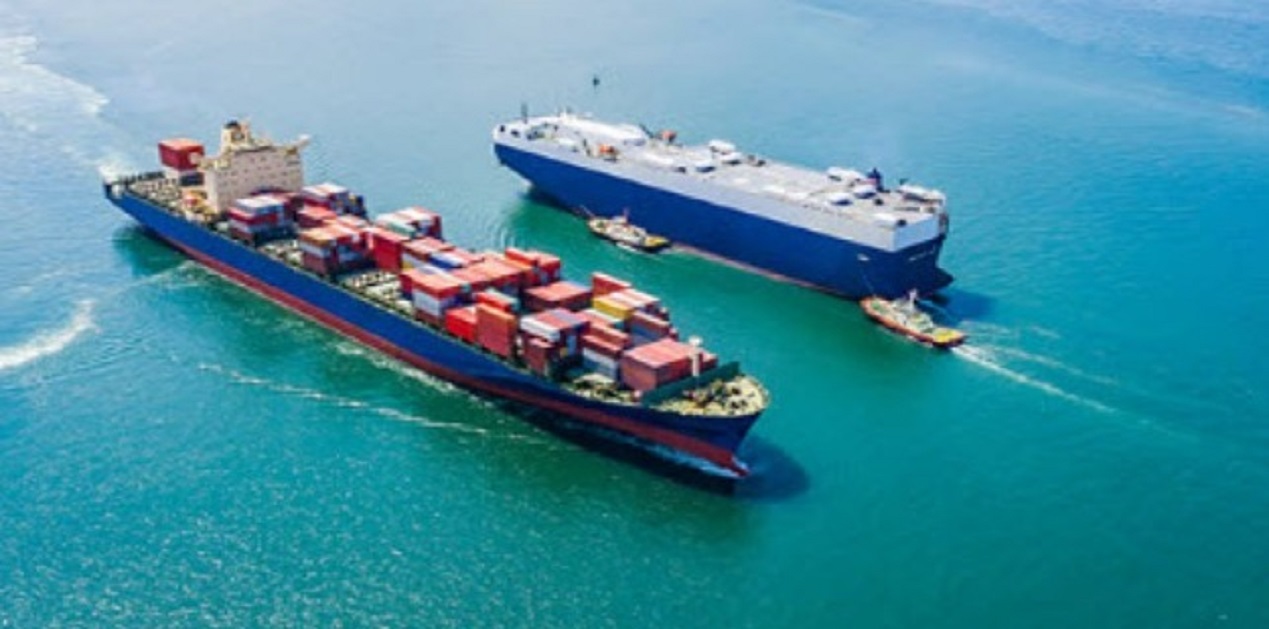The COVID-19 virus has impacted global maritime transportation sector including cruise liner industry. A number of major manufacturing hubs and markets across China have stopped businesses and manufacturing by small and medium enterprises has been put on hold. Majority of the workers and labour force have gone back home and are yet to return to work causing major disruption in production. Furthermore, hinterland connectivity and logistic operations have stopped and several shipping firms have closed offices.
This medical and health emergency may adversely impact on China’s economy in the short term. For instance, it is estimated that in the first two months of 2020, it may cost China over 1.3 trillion yuan (US$185 billion) due to huge drop in consumer spending, and tourism losses could be about 900 billion yuan.1 Further, it may take as many as six months to recover unless the spread of the virus is contained urgently.
First a look at the energy transportation sector; the Very Large Crude Carrier (VLCC) rates plummeted and witnessed a massive decline from US$ 103,052 per day on 2nd January to US$ 18,326 per day on 18th January 18 on the Persian Gulf sector due to declining demand in China.2 As far as liquid fuel is concerned, according to IEA, the global demand for January-February 2020 outlook is down to 378,000 barrels per day (bpd) and China’s demand is lower by 190,000 bpd on average in 2020. Similarly, IEA ‘expects a drop of 435,000 bpd of oil demand in Q1, the first year-on-year drop in more than 10 years’.3
Second, the global container trade which is intimately linked to China, particularly along the China-Asia, China-Europe and China-North America route, has suffered major setbacks. Many of the manufacturers of containerized goods have stopped or lowered production due to shortage of manpower/labour. According to Wall Street Journal the “losses of containerized lines amount to US$ 350 million per week in volume of lost cargo.4 AP Moller-Maersk, a Danish business conglomerate with activities in the transport, logistics and energy sectors, announced cancellation of 20 departures from China soon after the virus related health emergency was announced. Likewise several other shipping companies have decided to miss port calls to and from China amid risks to crew, non-availability of cargo and limited stevedore services in China.
Third, is about ports which link hinterland manufacturing hubs with global markets. According to Alphaliner, container vessels calling at key Chinese ports have declined by nearly 20% since 20 January and “ship calls at the seven ports in Yangtze River fell to 225 in January 2020 from 446 in December 2020”. 5
Fourth is about shipbuilding. Following quarantine orders in China, many shipyards are deserted and absence/non-availability of workers has slowed down ship construction activity causing loss of money as also defaulting on delivery schedules due to low supply of materials for construction. Jingjiang shipyard near Shanghai has been denied permission at least twice by the local government to resume operations at the shipyard. This has forced the shipyard to issue force majeure6 declarations and has sought delivery date extensions.7
Fifth, is perhaps the most important constituent of the shipping industry i.e. crewing. Given that most ships are reluctant to call at Chinese ports, there is shortage of crew for ships. Also, changing crew due to global health advisory and port restrictions in many ports across Asia is difficult. For instance, the Japanese shipping group NYK Line has minimized crew changes in China, instructed its ships to refrain granting seafarers shore leave during calls at Chinese ports as also avoid restocking provisions/picking up stores to prevent exposing crew members to shore staff in Chinese ports.8 The Philippines, which is one of the top suppliers of shipping crew, has banned seafarers to travel to Taiwan, China, Hong Kong and Macau to join ships.9
Similarly, many countries are careful to accept ships with Chinese crew amid fears of spread of the virus. For example, blood samples of two of the 19 Chinese crew members onboard the MV Magnate had to be taken after they were found to have mild fever as their ship docked at Chennai port in India; but later they didn't show symptoms of the viral infection.10 However, Chittagong Port Authority, Bangladesh circular has not mandated restriction for ‘Chinese Flag vessels or Chinese crew members on board other than the requirement of declaration for vessels arriving at Chittagong’.11
The marine leisure industry has witnessed a major setback as well. Over 50 cruise voyages have been cancelled disrupting holiday plans of thousands of people.12 In fact the global cruise industry valued at US$ 45.6 billion has been battered by COVID-19 and the virus has been labeled as a ‘public-relations nightmare’.13 This is despite the fact that the International Maritime Organisation (IMO) has urged the Flag State authorities, port State authorities and control regimes, companies and shipmasters to “cooperate, in the current context of the outbreak, to ensure that, where appropriate, passengers can be embarked and disembarked, cargo operations can occur, ships can enter and depart shipyards for repair and survey, stores and supplies can be loaded, certificates can be issued and crews can be exchanged.”14
The cruise market in Asia had been on the rise and according to the Cruise Lines International Association, the passenger traffic rose to about 4.2 million in 2018 led by Chinese outbound travelers who spent US$ 277 billion in 2018. 15
Although only two vessels i.e. Diamond Princess and Westerdam were the worst affected by COVID-19, but there are widespread fears that cruise ships operating in Asian waters may be the carriers of the virus. Many countries have rejected permission to these vessels to dock at their ports even if they had not called at ports in China. However, the Royal Government of Cambodia, taking note of the needs of passengers and humanitarian considerations, allowed the Westerdam with 2,257 persons on board to dock at Sihanoukville Port.16
Finally, it is fair to assume that the global maritime trade would be impacted in the near term by COVID-19 and could witness reduced trade volumes. In case production and manufacturing is not restored in China, it may take time a long time for global maritime supply chains to recover to pre-epidemic levels. This will also depend on the Chinese government’s decision to allow resuming production by small and medium-sized enterprises who are struggling to restart operations due to missing labour force that face lockdowns in their cities and townships.
Notes
- “Covid-19 likely to slash US$185 billion off China’s economy in January, February, says ex-IMF official”, https://www.scmp.com/economy/china-economy/article/3051909/covid-19-likely-slash-us185-billion-chinas-economy-january (accessed 24 February 2020).
- “BIMCO: Coronavirus Comes at the Worst Time for Shipping”, https://worldmaritimenews.com/archives/291411/bimco-coronavirus-comes-at-the-worst-time-for-shipping/ (accessed 23 February2020).
- Ibid.
- “Corona Virus: Impact On China’s Global Trade And Shipping Industry”, https://fullavantenews.com/coronavirus-impact-global-trade-shipping-industry-china/ (accessed 23 February2020).
- Daniel Koo, “Ports face Covid-19 stress”, https://www.thestar.com.my/business/business-news/2020/02/18/ports-face-covid-19-stress (accessed 23 February2020).
- In most shipbuilding contracts, force majeure is treated as a "permissible delay", entitling the shipyard to an extension of time of the delivery date.
- Ik Wei Chong , Nicholas Lum , Sapna Jhangiani and Paul Collier, “COVID-19 – Issues Affecting Shipbuilding Contracts”, http://www.mondaq.com/Article/894830 (accessed 23 February 2020).
- Martina Li, “The maritime world’s COVID-19 response”, https://safetyatsea.net/news/2020/long-read-the-maritime-worlds-covid-19-response/ (accessed 23 February2020).
- Ibid.
- “Two Chinese crew of ship docked in Chennai port test negative”, :
https://mumbaimirror.indiatimes.com/articleshowprint/74212412.cms?prtpage=1?utm_source=contentofinterest&utm_medium=text&utm_campaign=cppst (accessed 23 February2020). - For details see Circular No: VTMIS/Misc/377 dated 30 January 2020, Chittagong Port Authority, Department of Shipping, Bangladesh.
- “Coronavirus: cruise industry caught in the eye of the storm”, https://www.ft.com/content/47dd134a-5230-11ea-90ad-25e377c0ee1f (accessed 23 February2020).
- “In Coronavirus, $45-Billion Cruise Industry Faces a Big Challenge”, https://www.nytimes.com/2020/02/12/travel/coronavirus-cruises-travel.html (accessed 23 February2020).
- “IMO Urges No Unnecessary Delays to Ships Due to Coronavirus”, https://www.marineinsight.com/shipping-news/imo-urges-no-unnecessary-delays-to-ships-due-to-coronavirus/ (accessed 23 February2020).
- “Coronavirus: cruise industry caught in the eye of the storm”, https://www.ft.com/content/47dd134a-5230-11ea-90ad-25e377c0ee1f (accessed 23 February2020).
- “Westerdam with 2,257 persons on board to dock at Sihanoukville Port”, https://www.khmertimeskh.com/50690528/2257-guests-and-crew-on-board-cruise-vessel-westerdam-heading-for-cambodian-port-are-reportedly-free-of-coronavirus-says-vessel-owners (accessed 24 February2020).
(The paper is the author’s individual scholastic articulation. The author certifies that the article/paper is original in content, unpublished and it has not been submitted for publication/web upload elsewhere, and that the facts and figures quoted are duly referenced, as needed, and are believed to be correct). (The paper does not necessarily represent the organisational stance... More >>
Image Source: https://www.maritime-executive.com/media/images/article/Photos/Vessels_Large/container-ship-and-car-carrier-from-imo.12a475.jpg











Post new comment